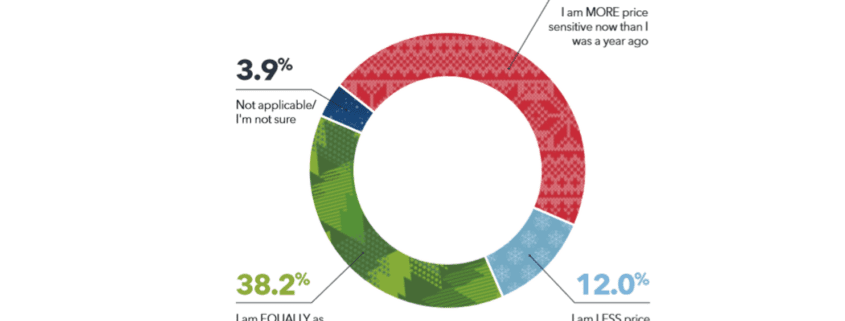3 Reasons Why Retail Needs AI to Stay Competitive and Joined-Up
How can AI help the retail sector as it goes through more upheaval in three key aspects of the way it goes to market and operates?
The retail sector is under much scrutiny at the moment. The US is hailing 2018 as “one of the best years for the retail industry in a decade”, China’s figures held up in December despite the trade war and slowing economy, while the UK is in the doldrums, experiencing their “worst Christmas in a decade”. This encompasses the whole spectrum of performance!
I have had the privilege of working across many sectors in my career, helping companies become more customer-centric and deliver more distinctive and profitable customer experiences. This has led to being recognised as an influencer, meaning that I get access to numerous reports, studies and white papers.
In my collaborative role with SAS I have been re-reading the results of their recently published survey “CHRISTMAS 2018: TODAY’S SHOPPER” in the light of reported actual retail performance and the many predictions for the sector in 2019*.
Here are three consistent messages and conclusions that are relevant to all retailers, whether the market is up, down or stagnant!
1) Customer behaviour continues to change. The SAS report isn’t just about Christmas shopping. I would heartily recommend that you read it because it contains real insight into behavioural and attitudinal changes such as price-sensitivity, deal hunting, omnichannel research-to-purchase journeys, product review impact, delivery/returns tolerance levels, and loyalty.
The last decade has taught older consumers to be savvier, and younger generations / emerging economies have picked up this baton and are running with it! There will be winners and losers in all market conditions, and the winners will be the retailers that stay closest to, and quickly adapt to, customer behaviour.
2) Communicating to customers has never been easier, but engaging them has never been harder. Channels and media have multiplied at the same time as attention spans have shrunk. It has never been more important to craft personalised offers/messages to highly targeted consumers in the channel or medium of their choice and at precisely the right point in their customer journey.
Gone are the days when Sales, Marketing, PR, Service, Research, Digital, Contact Centre, Brick-and-mortar, Purchasing, Deliveries, etc. could all be silos within the organisation not talking to each other (let alone talking to customers with any degree of consistency) – or worse, internally competing with each other! Disconnected businesses (staff, processes, data, tools, agencies, etc.) lead to counter-cultural staff behaviours and a dysfunctional customer experience. Real-time, personal, relevant customer engagement isn’t a concept any more, it’s a business imperative.
3) Everything is “front office”. The third message that has rung clear through all the different angles of commentary on the retail sector is that everything in the business value chain affects the customer experience.
Digital transformation is leading to transparency and self-serve functionality in both directions – deep into the supply chain as well as enabling unprecedented choice for delivery, collection, “trybuy”, and return.
In parallel with this, the incorporation of sophisticated forecasting of uncontrollable factors (weather, politics, economy, health, etc.) into supply, demand and resources modelling are beginning to offer unparalleled opportunities for agile and optimised operations.
Why does the retail sector need Artificial Intelligence (AI)?
The common denominator in all three of the points made above is good data. Masses of it, instantly analysed and deployed real-time triggering actions wherever they add value in the business ecosystem.
Whether it’s applied to improve and innovate the customer experience (e.g. AR), tailor personal offers, optimise availability and supply, join-up silos, win the deal via dynamic pricing, ensure adequate (and happy) staffing, enable hassle-free returns (the list of profitable benefits goes on and on), being insight-driven will give you an edge in this cut-throat sector.
And to become insight-driven as your business goes through more upheaval in these three key aspects of going to market and operating requires AI.
Not everything in business is controllable, but a lot of it is predictable if relevant trustworthy data is collected and analysed quickly enough.
As managers we’ve got to stop kidding ourselves that we can absorb and compute the billions of inputs – about customer behaviour, our marketing efforts, and how the end-to-end value chain is operating – better than a machine! What we can do, however, is use all these machine-generated insights to make much smarter decisions.
The good news is that what I’ve described isn’t science fiction any more, and companies like SAS can help if you’re serious about being an insight-driven and customer centric organisation.
This blog was produced as part of the SAS Collaborators Programme.
* The sources of this digest are too numerous to log without this blog looking like an academic journal article! However, I’ve tweeted about most of them in the last few months so please check out my twitter feed if you’d like to investigate further. None of this blog is directly lifted from any of these sources – comments & conclusions are my own.
- Customer Strategy in the B2B Membership Sector - May 27, 2025
- Build a B2B Customer Strategy - May 20, 2025
- Should you implement NPS in B2B? - January 22, 2025






